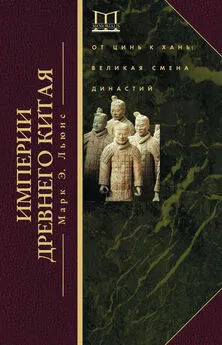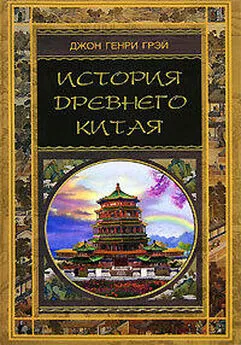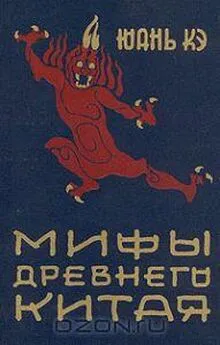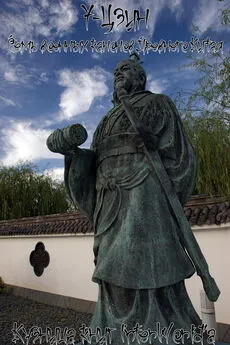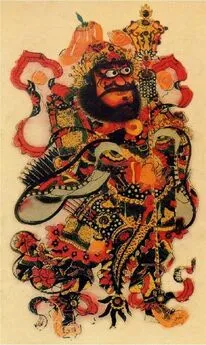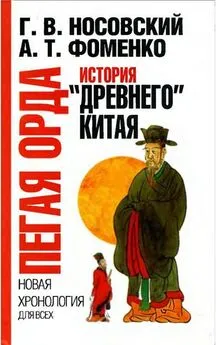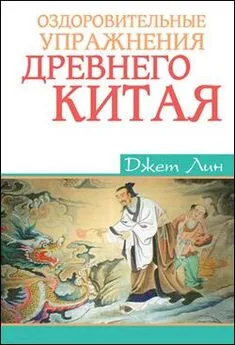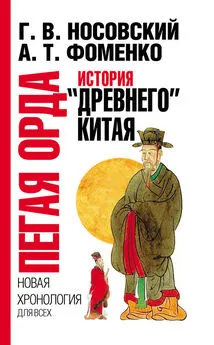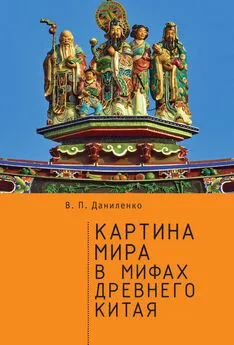Марк Льюис - Империи Древнего Китая. От Цинь к Хань. Великая смена династий
- Название:Империи Древнего Китая. От Цинь к Хань. Великая смена династий
- Автор:
- Жанр:
- Издательство:ЛитагентЦентрполиграфa8b439f2-3900-11e0-8c7e-ec5afce481d9
- Год:2016
- Город:Москва
- ISBN:978-5-227-06557-5, 978-5-227-06558-2
- Рейтинг:
- Избранное:Добавить в избранное
-
Отзывы:
-
Ваша оценка:
Марк Льюис - Империи Древнего Китая. От Цинь к Хань. Великая смена династий краткое содержание
Книга американского исследователя Марка Эдварда Льюиса посвящена истории Древнего Китая в имперский период правления могущественных династий Цинь и Хань. Историк рассказывает об особой роли императора Цинь Шихуана, объединившего в 221 г. до н. э. разрозненные земли Китая, и формировании единой нации в эпоху расцвета династии Хань. Автор анализирует географические особенности Великой Китайской равнины, повлиявшие на характер этой восточной цивилизации, рассказывает о жизни в городах и сельской местности, исследует религиозные воззрения и искусство, а также систему правосудия и семейный уклад древних китайцев. Авторитетный китаист дает всестороннюю характеристику эпохи правления династий Цинь и Хань в истории Поднебесной, когда была заложена основа могущества современного Китая.
Империи Древнего Китая. От Цинь к Хань. Великая смена династий - читать онлайн бесплатно ознакомительный отрывок
Интервал:
Закладка:
DeWoskin, Kenneth J. “Famous Chinese Childhoods.” In Chinese Views of Childhood. Ed. Anne Behnke Kinney. Honolulu: University of Hawaii Press, 1995.
Di Cosmo, Nicola. Ancient China and Its Enemies: The Rise of Nomadic Power in East Asian History. Cambridge: Cambridge University Press, 2002.
– “The Northern Frontier in Pre-Imperial China. ” In The Cambridge History of Ancient China: From the Origins of Civilization to 221 B.C. Ed. Michael Loewe and Edward Shaughnessy. Cambridge: Cambridge University Press, 1999.
Dieny, Jean-Pierre. “Le saint ne reve pas: De Zhuangzi a Michel Jouvet.” Etudes Chinoises 20:1—2 (Printemps-Automne 2001): 127—200.
Dongguan Flan ji jiao zhu (Annotated Commentary on the “Han Records from the Eastern Tower”). Annotated by Wu Shuping. Zhongzhou: Guji, 1987.
Durrant, Stephen W. The Cloudy Mirror: Tension and Conflict in the Writings of Sima Qian. Albany: State University of New York Press, 1995.
–“Ssu’ma Ch’ien’s Portrayal of the First Ch’in Emperor.” In
Imperial Rulersbip and Cultural Change in Traditional China. Ed. Frederick P. Brandauer and Chun-chieh Huang. Seattle: University of Washington Press, 1994.
Ebrey, Patricia. “The Early Stages in the Development of Descent Group Organization.” In Kinship Organization in Late Imperial China: 1000– 1940. Ed. Patricia Ebrey and James L. Watson. Berkeley: University of California Press, 1986.
–“The Economic and Social History of Later Han.” In The Cambridge History of China, Vol. 1: The Chin and Han Empires, 221 B.C.– A.D. 220. Cambridge: Cambridge University Press, 1986.
–“Later Han Stone Inscriptions.” Harvard Journal of Asiatic Studies 40:2 (1980): 325-353.
Egan, Charles H. “Reconsidering the Role of Folk Songs in pre-T’ang Yiieh-fu Development.” T’oung Pao 86 (2000): 47—99.
–“Were Yiieh-fu Ever Folk Songs? Reconsidering the Relevance
of Oral Theory and Balladry Analogies.” CLEAR 22 (Dec. 2000): 31-66.
Elisseeff, Danielle. New Discoveries in China: Encountering History through Archaeology. Secaucus, NJ: Chartwell Books, 1983.
Eno, Robert. The Confucian Creation of Heaven: Philosophy and the Defense of Ritual Mastery. Albany: State University of New York Press, 1990.
Erickson, Susan N. “Money Trees of the Eastern Han Dynasty.” Bulletin of the Museum of Far Eastern Antiquities 11 (1994): 1—116.
Finsterbusch, Kate. Verzeichnis und Motivindex der Han-Darstellungen. 2 vols. Wiesbaden: Otto Harrasowitz, 1971.
Frankel, Hans. “The Development of Han and Wei Yiieh-fu as a High Literary Genre.” In The Vitality of the Lyric Voice: Shih Poetry from the Late Han to the Tang. Ed. Stephen Owen and Shuen-fu Lin. Princeton: Princeton University Press, 1986.
– “Yiieh-fu Poetry.” In Studies in Chinese Literary Genres. Ed.
Cyril Birch. Berkeley: University of California Press, 1977.
Gao, Wen. Han bei ji shi (Collected Explanations of Han Inscriptions). Kaifeng: Henan University Press, 1985.
[Chun qiu\ Gongyang zhuan zhu shu (Commentaries and Subcommentaries to the “Gongyang Commentary to the Spring-and-Autumn Annals”). In Shisanjing zhu shu (The Thirteen Classics with Commentaries and Subcommentaries), Vol. 7. Taipei: Yiwen, 1976.
Goodman, Howard L. Ts’ao PI Transcendent: The Political Culture of Dynasty-Founding in China at the End of the Han. Seattle: Scripta Serica, 1998.
Graham, A. C. Disputers of the Tao: Philosophical Argument in Ancient China. La Salle, IL: Open Court, 1989.
– Later Mohist Logic, Ethics and Science. Hong Kong: Chinese
University of Hong Kong, 1978.
–“The Nung-chia School of the Tillers and the Origins of Peasant
Utopianism in China.” Bulletin of the School of Oriental and African Studies 42 (1971): 66-100.
Guanzhong cong shu (Collecteana of Guanzhong). Compiled by Song Li-ankui. Reprint of 1934 edition. Taipei: Yiwen, 1970.
Guanzi jiao zheng (Annotated and Corrected “Master Guan”). In Xin bian zhu zi ji cheng (New Compilation of the Comprehensive Collection of the Various Masters), Vol. 5. Taipei: Shijie, 1974.
[Chun qiu] Guliang zhuan zhu shu (Commentaries and Subcommentaries to the “Guliang Commentary to the Spring and Autumn Annals”). In Shisan jing zhu shu (The Thirteen Classics with Commentaries and Subcommentaries), Vol. 7. Taipei: Yiwen, 1976.
Guo yu (Words of the States). Shanghai: Guji, 1978.
Han Feizi ji shi (Collected Elucidations of the “Master Han Fei”). Annotated by Chen Qiyou. Shanghai: Renmin, 1974.
Han shi wai zhuan ji shi (Exoteric Transmission of “Han Ying’s Commentary on the Odes”). Annotated by Xu Weiyu. Beijing: Zhonghua, 1980.
Han shu (The Book of the Han). Beijing: Zhonghua, 1962.
Hardy, Grant. Worlds of Bronze and Bamboo: Sima Qian’s Conquest of History. New York: Columbia University Press, 1999.
Harper, Donald. “A Chinese Demonography of the Third Century B.C.” Harvard Journal of Asiatic Studies 45:2 (1985): 459—498.
– Early Chinese Medical Literature: The Mawangdui Medical Manuscripts. London: Kegan Paul, 1998.
–“Resurrection in Warring States Popular Religion.” Taoist Resources 5:2 (December 1994): 13—28.
–“Wang Yen-shou’s Nightmare Poem.” Harvard Journal of Asiatic Studies 47:1 (1987): 239-283.
– “Warring States Natural Philosophy and Occult Thought.”
In The Cambridge History of Ancient China. Ed. Michael Loewe and Edward L. Shaughnessy. Cambridge: Cambridge University Press, 1999.
Hawkes, David. The Songs of the South: An Anthology of Ancient Chinese Poems by Qu Yuan and Other Poets. New York: Penguin Books, 1985.
Hayashi, Minao. Chugoku kodai no seikatsu shi (History of Daily Life in Ancient China). Tokyo: Yoshikawa Bunkan, 1992.
Heng, Chye Kiang. Cities of Aristocrats and Bureaucrats: The Development of Medieval Chinese Cityscapes. Honolulu: University of Hawaii Press, 1999.
Hertz, Robert. Death and the Right Hand. Tr. Rodney Needham and Claudia Needham. Aberdeen: Cohen & West, 1960.
Holzman, Donald. “The Cold Food Festival in Early Medieval China.” Harvard Journal of Asiatic Studies 46:1 (1986): 51—79.
Hotaling, Stephen. “The City Walls of Han Ch’ang-an.” Toung Pao 64 (1978): 1-36.
Hou Han shu (Book of the Later Han). Beijing: Zhonghua, 1965.
Hsu, Cho-yun. Ancient China in Transition: An Analysis of Social Mobility, 722—222 B.C. Stanford: Stanford University Press, 1965.
–“The Changing Relationship between Local Society and Central
Political Power in Former Han: 206 B.C.-8 A.D.” Comparative Studies in Society and History 7 (July 1965): 345—370.
– H anAgriculture: The Formation of Early Chinese Agrarian Econ omy. Seattle: University of Washington Press, 1980.
Hsu, Cho-yun, and Katheryn M. Linduff. Western Zhou Civilization. New Haven: Yale University, 1988.
Huainanzi (The Master of Huainan). In Xin bian zhu zi ji cheng (New Compilation of the Comprehensive Collection of the Various Masters), Vol. 7. Taipei: Shijie, 1974.
Huang Di nei jing ling shu jiao zhu yu yi (Annotation, Commentary, and Translation of the “Numinous Pivot of the Internal Classic of the Yellow Emperor”). Annotated by Guo Aichun. Tianjin: Tianjin Kex-ue Jishu, 1989.
Hughes, E. R. Two Chinese Poets: Vignettes of Han Life and Thought. Princeton: Princeton University Press, 1960.
Hulsewe, A. F. P. “Ch’in and Han Law.” In The Cambridge History of China, Vol. 1: The Ch’in and Han Empires, 221 B.C.—A.D. 220. Cambridge: Cambridge University Press, 1986.
– Remnants of Ch’in Law: An Annotated Translation of the Ch’in
Legal and Administrative Rules of the 3rd Century B.C. Leiden: E. J. Brill, 1985.
– Remnants of Han Law, Vol. 1. Leiden: E. J. Brill, 1955.
–“The Wide Scope of Tao Theft’ in Ch’in-Han Law.” Early
China 13 (1988): 166-200.
Ikeda, On. “Chugoku rekidai boken ryakko.” (A Brief Examination of Chinese Grave Contracts Through Successive Dynasties). Toy б bunka kenkyusho kiyo 86:6 (1981): 193—278.
James, Jean. A Guide to the Tomb and Shrine Art of the Han Dynasty. Lewiston, NY: Edwin Mellen, 1996.
“Jiangsu Gaoyou Shaojiagou Han dai yizhi de qingli” (The Han Site at Shaojiagou in Gaoyou in Jiangsu Province). Kaogu 10 (1960): 18—23.
Jiao, Yanshou. Jiao shi yi lin (Master Jiao’s Forest of the Changes). Cong shu ji cheng ed. Changsha: Shangwu, 1937.
Jiazi xin shu jiao shi (Annotated Elucidations of “Master Jia’s New Writings”). Annotated by Qi Yuzhang. Taipei: Qi Yuzhang, 1974.
Jin shu (Book of the Jin). Beijing: Zhonghua, 1974.
Jingfa (Canonical Model). Beijing: Wenwu, 1976.
Juyan xin jian (New Wooden Strips from Juyan). Beijing: Zhonghua, 1994.
Kalinowski, Marc. “The Xingde Text from Mawangdui.” Early China 23-24 (1998-1999): 125-202.
Keightley, David N. “The Quest for Eternity in Ancient China: The Dead, Their Gifts, Their Names.” Ancient Mortuary Traditions of China. Ed. George Kuwayama. Los Angeles: Far Eastern Art Council—Los Angeles County Museum of Art, 1991, pp. 12—24.
Kern, Martin. The Stele Inscriptions of Ch ’in Shih-huang: Text and Ritual in Early Chinese Imperial Representation. New Haven, CT: American Oriental Society, 2000.
Kinney, Ann e Behnke. The Art of the Han Essay: Wang Fus Ch’ien-fu Lun. Tempe: Center for Asian Studies, Arizona State University, 1990.
–“Dyed Silk: Han Notions of the Moral Development of Children.” In Chinese Views of Childhood. Ed. Anne Behnke Kinney. Honolulu: University of Hawaii Press, 1995.
– Representations of Childhood and Youth in Early China. Stanford:
Stanford University Press, 2004.
Kipnis, Andrew B. Producing Guanxi: Sentiment, Self and Subculture in a North China Village. Durham: Duke University Press, 1997.
Kleeman, Terry. Great Perfection: Religion and Ethnicity in a Chinese Millennial Kingdom. Honolulu: University of Hawaii Press, 1998.
– “Land Contracts and Related Documents.” In Chugoku no
ShUkyo Shiso to Kagaku. Tokyo: Kokusho Kankokai, 1984.
Knapp, Ronald G. China’s Old Dwellings. Honolulu: University of Hawaii Press, 2001.
Knechtges, David. “The Emperor and Literature: Emperor Wu of the Han.” In Imperial Rulership and Cultural Change. Ed. Frederick P. Brandauer and Chun-chieh Huang. Seattle: University of Washington Press, 1994.
– Th en anRhapsody: A Study of the Fu of Yang Hsiung. Cambridge:
Cambridge University Press. 1976.
–“Ssu-ma Hsiang-ju’s Tall Gate Palace Rhapsody’.” Harvard
Journal of Asiatic Studies 41:1 (1991): 47—64.
Knoblock John, tr. Xunzi: A Translation and Study of the Complete Works, Vol. i. Stanford: Stanford University Press, 1988.
Ко, Dorothy. “Pursuing Talent and Virtue: Education and Women’s Culture in Seventeenth– and Eighteenth-Century China.” Late Imperial China 13:1 (June 1992): 9-39.
Читать дальшеИнтервал:
Закладка:
